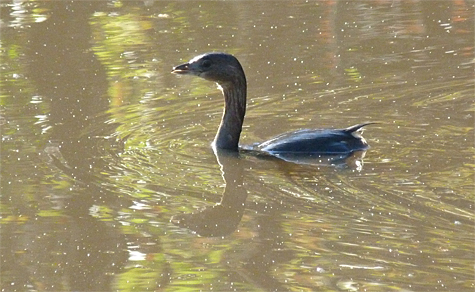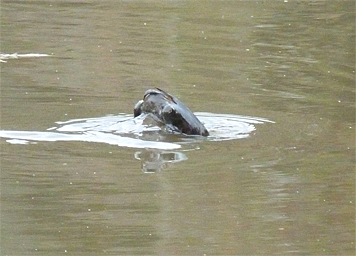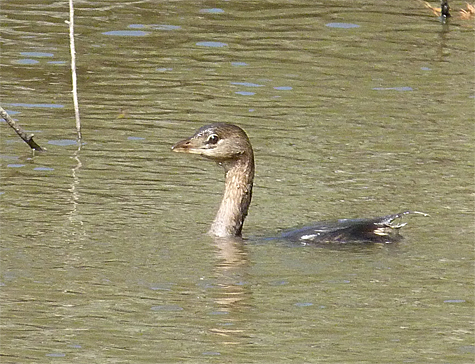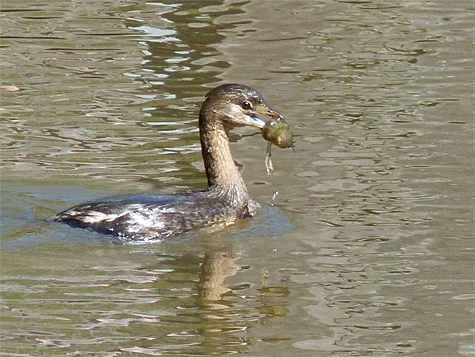
I first noticed the grebe towards the end of the day on the 16th of October. I hadn’t seen one here in our Wetlands since 2012, September to be exact.

These smallest of grebes likely to be found in the east, are by no means rare, or even uncommon. A trip to any of the big lakes in our area during late fall or winter should score a look at one. Despite their relative common local occurence, they’re always a thrill to see in our Wetland here at the Museum.
Pied-billed grebes are named for their black and white bill, there’s a black ring around the bill during breeding season. The bill appears splotched in winter.

What do pied-billed grebes eat? The list of food items for these little grebes is a long one. If you stood and watched our visiting grebe for more than just a few minutes, you’re likely to see it surface with any manner of creature in its bill. Everything from aquatic insects, tadpoles, small fish, and even the red scourge, the red swamp crayfish, is up for grabs.

Note: To understand why I refer to the crayfish as the red scourge, see here. </2011/10/26/the-crayfish-among-us-part-ii/>
I don’t know how long the grebe will stay with us, so if you want a good chance at seeing one at fairly close range, stop by the Wetlands and have a look. They’re often distant at the big reservoirs, fine if you have a good spotting scope, but the view here at the Museum is a bit more intimate.
Happy grebe watching!
